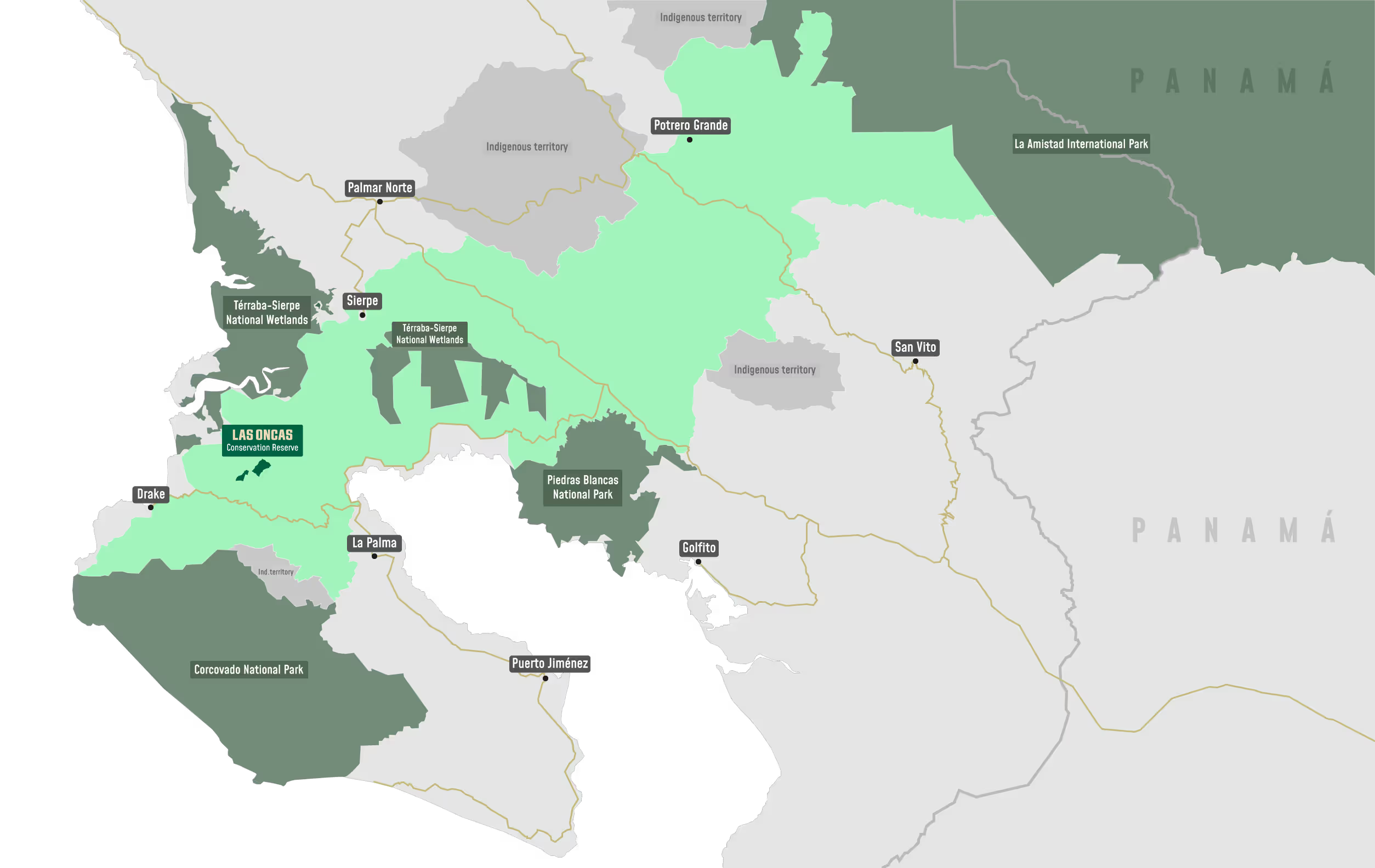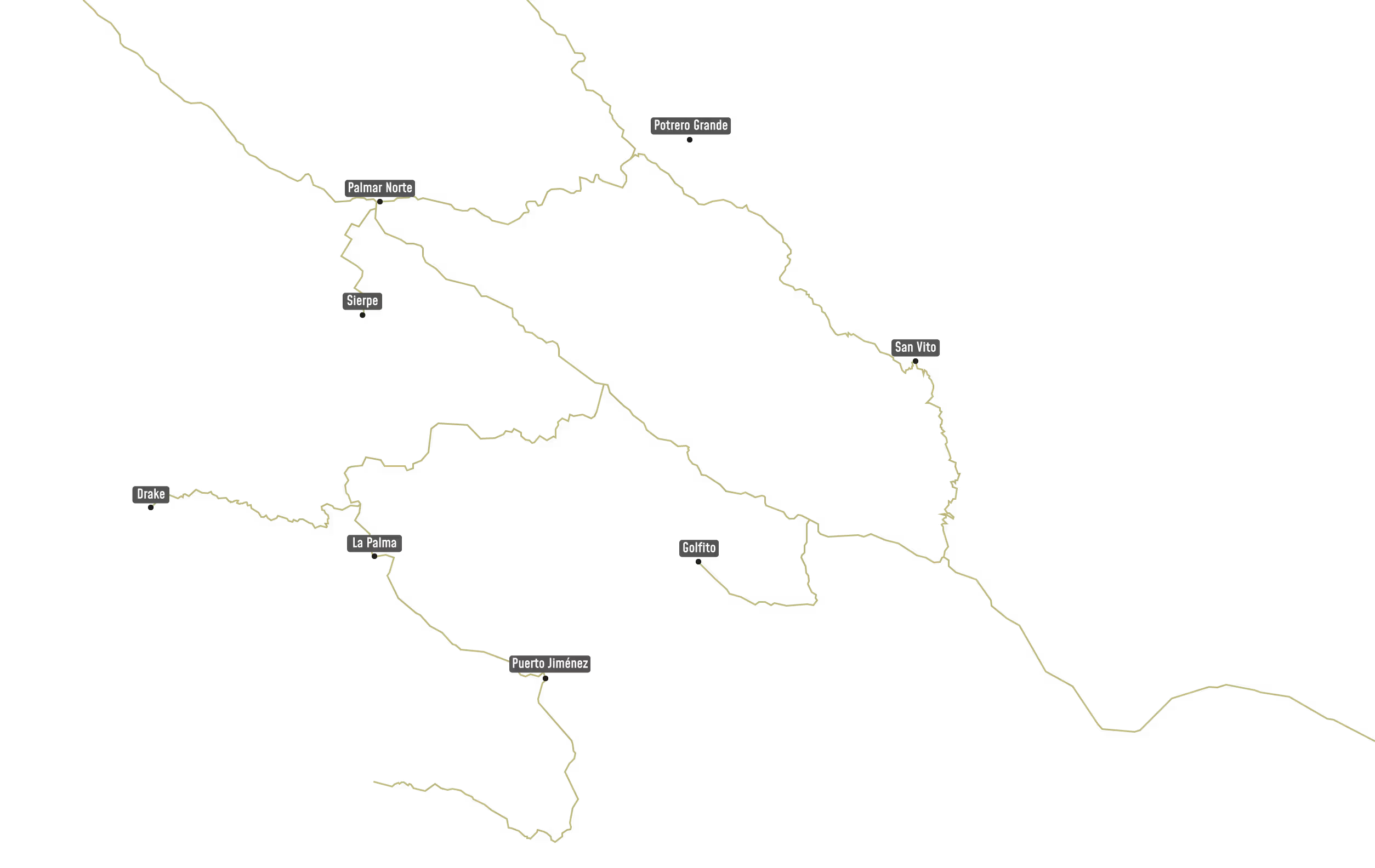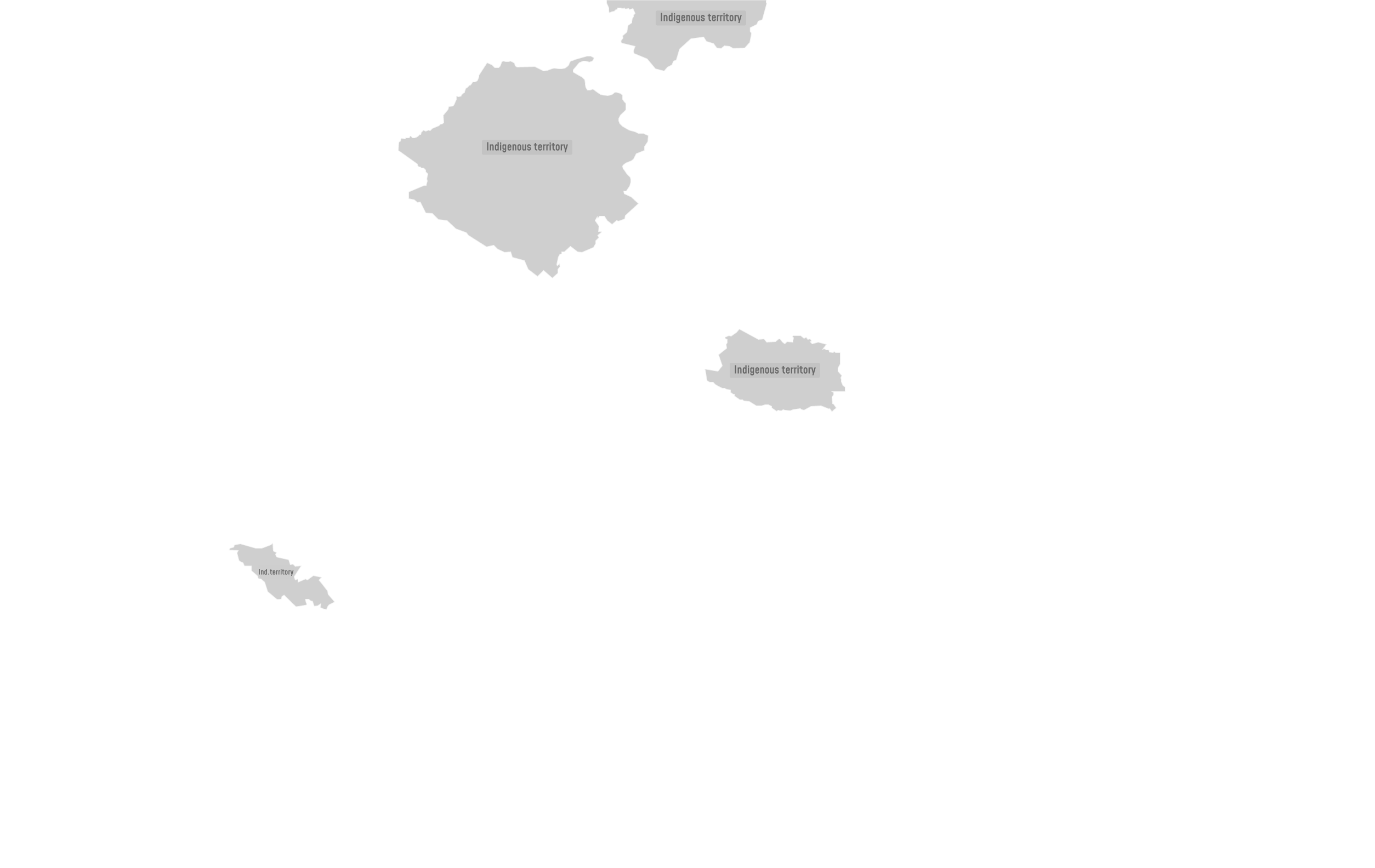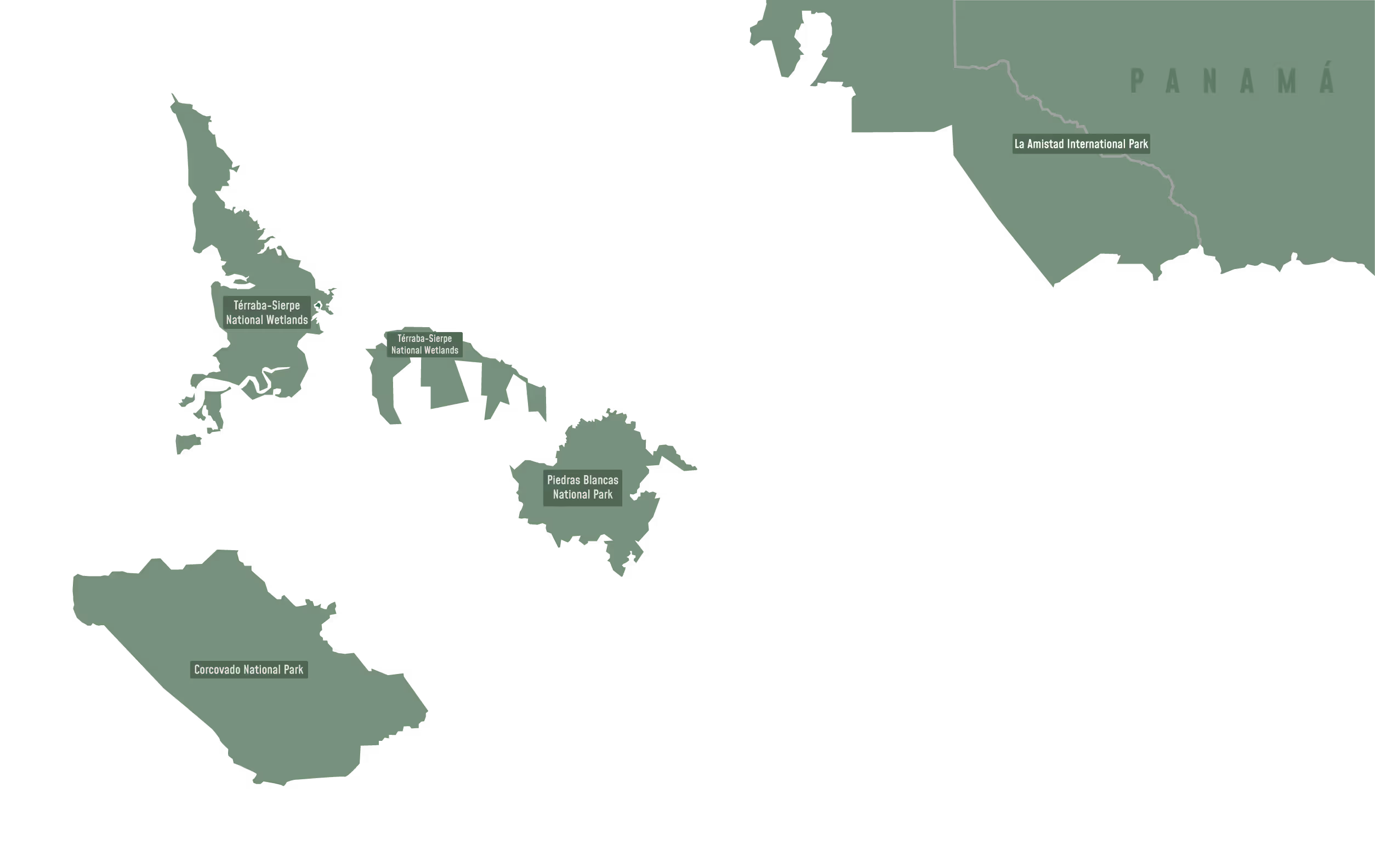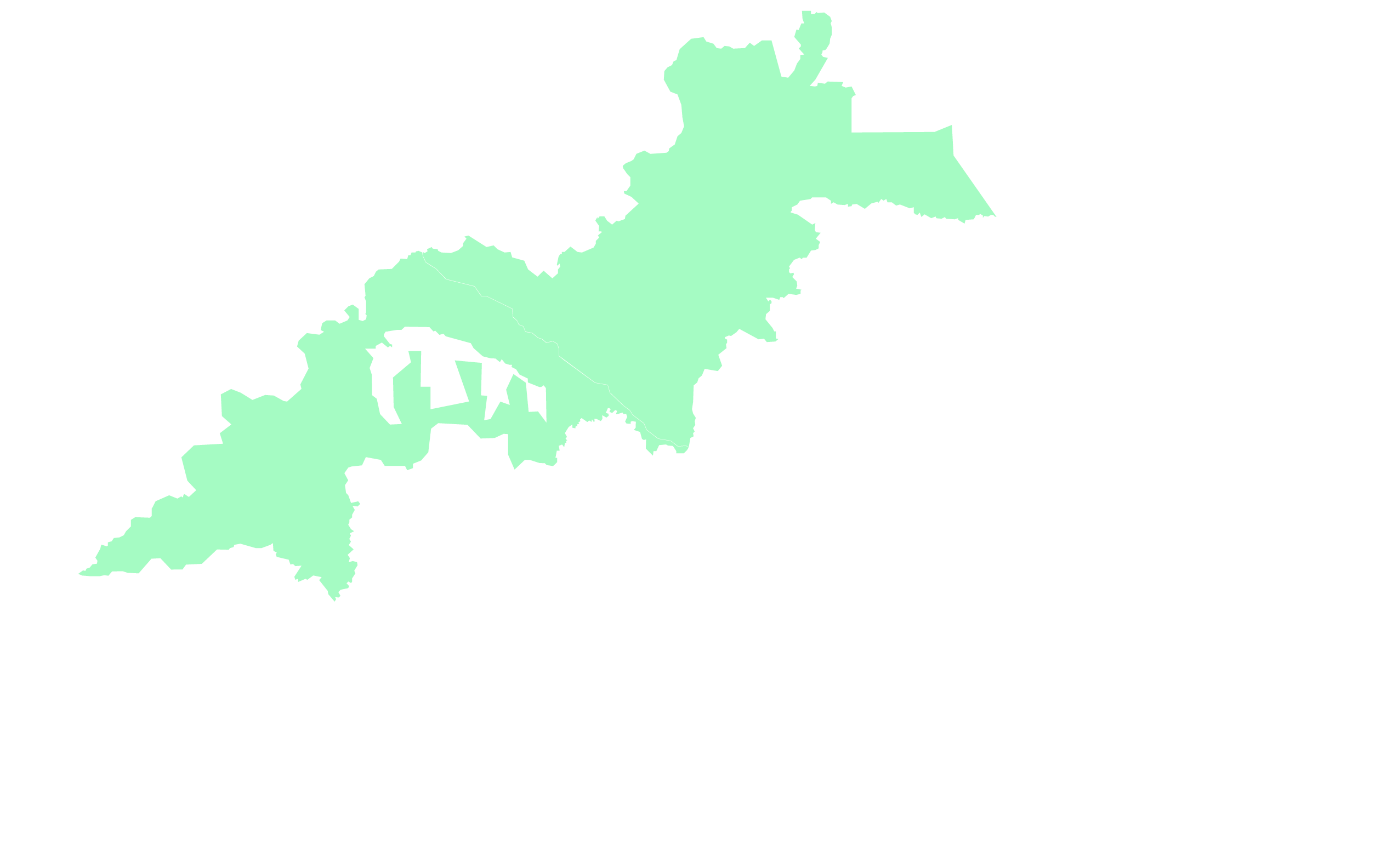Welcome to Las Oncas Conservation Reserve, a sanctuary dedicated to protecting and restoring one of Earth's wildest places: the Osa Peninsula in Costa Rica. Known as the most biodiverse area on the planet, our reserve covers 504 acres (204 hectares).
Home to six resident jaguars, our lands serve as a critical corridor for wildlife, safeguarding countless rare and endangered species. Through active wildlife monitoring, reforestation, and community collaboration, we contribute to protecting a region that contains 3% of worldwide biodiversity.
Join us in our mission to reconnect fragmented habitats, revive ecosystems, and ensure a vibrant future for Osa's jaguars.
Acres
204 hectars
of protected lands
resident jaguars
within the reserve
Feets
431 meters
of elevation gain
Protecting
The most
BIODIVERSE
Place
On
EARTH
Las Oncas Conservation Reserve is protecting one of the most extraordinary natural treasures on the planet: the Osa Peninsula, widely recognized as the most biodiverse place on Earth. By preserving strategic areas of tropical rainforest, Las Oncas safeguards a stunning variety of life, including rare and endangered species of mammals, reptiles, amphibians, birds, insects, and plants. This protection extends across a mosaic of unique ecosystems, helping sustain the delicate ecological relationships that allow these species to thrive. In doing so, Las Oncas plays a vital role in preserving not just individual species, but the ecological balance of an entire living landscape.
Monitoring
At Las Oncas, we are actively monitoring the wild species that live within our reserve. This work is both fascinating and vital.
By understanding which animals are present and how they use the land, we can make better decisions to protect them and the ecosystems they depend on. To do this, we have installed a network of strategically placed camera traps throughout the reserve. This network allow us to observe wildlife without disturbing it, giving us a clear and ongoing view of the biodiversity we’re working to protect. Thanks to this system, we have been able to document incredible species like pumas, ocelots, tapirs and of course jaguars, each one a key indicator of a healthy rainforest.
SHAPING
The
Future
After years exploring the wildest rainforests of Costa Rica's South Pacific and monitoring jaguars, we have identified key areas in need of conservation efforts outside of existing national parks. Establishing a sanctuary and safeguarding the most crucial lands for jaguars from the Talamanca Mountain Range to the Osa Peninsula is essential to reinforce their populations. By establishing a base camp to serve as our operational center, we will ensure that research and fieldwork are carried out efficiently, with the necessary infrastructure to support long-term conservation efforts.
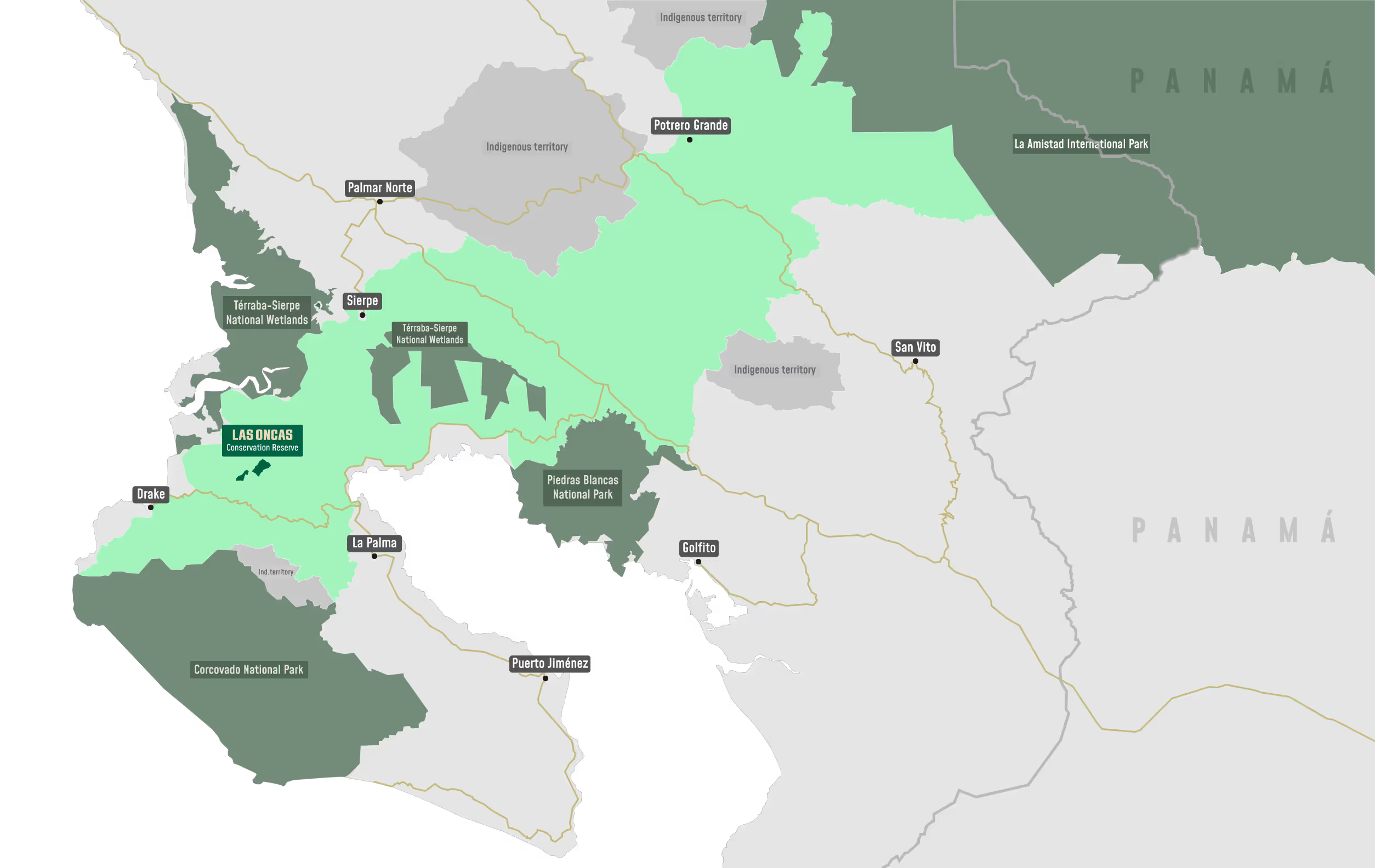
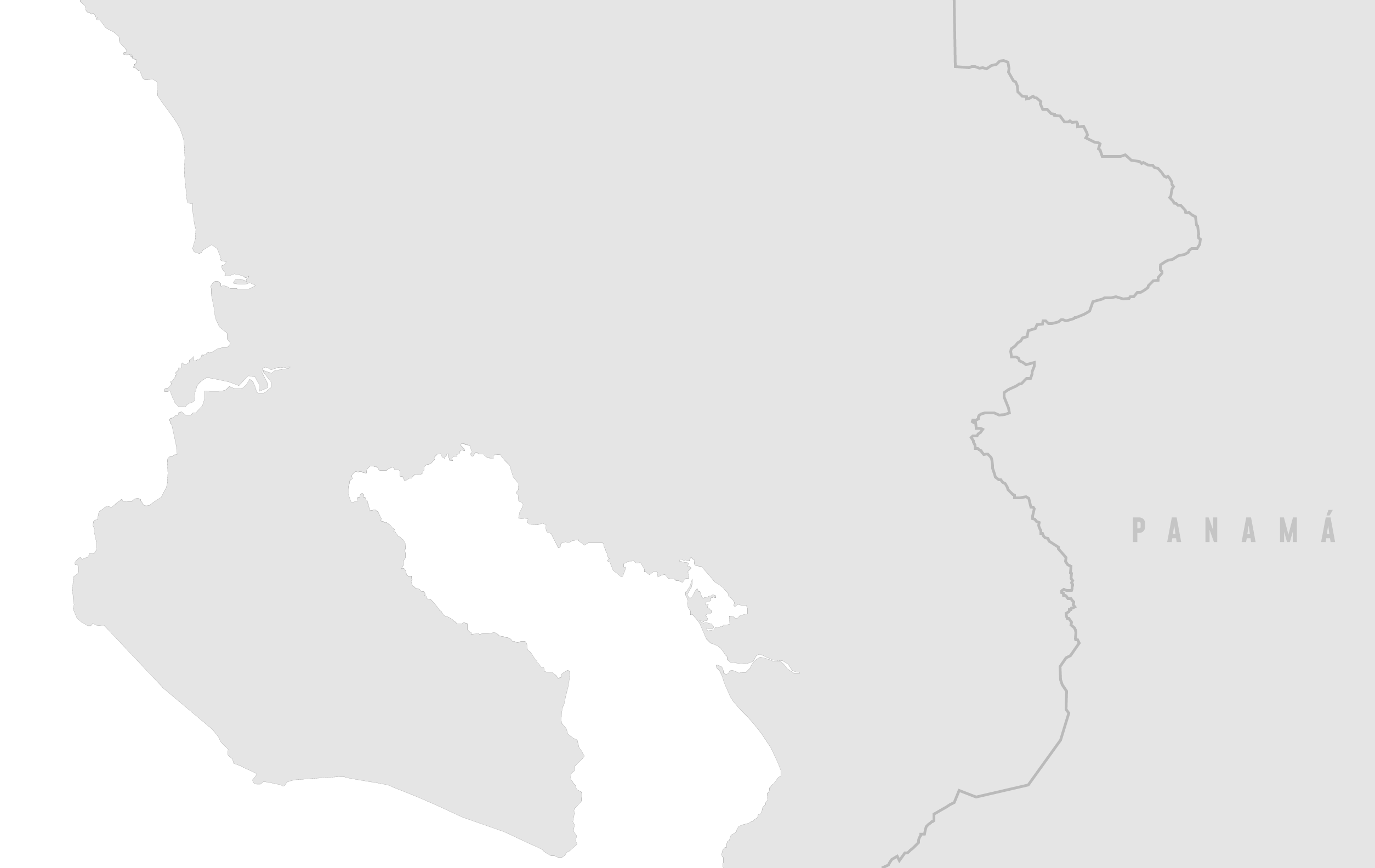
TRANSFORMING
A
CATTLE
FIELD
INTO
A
RAINFOREST
Our reserve includes a section that was once used as a cattle field, and this comes with several challenges. One of the most important tasks we face is removing the old barbed-wire fences that still divide the landscape. These fences, originally used to contain livestock, now pose a serious barrier to wildlife movement. For animals like jaguars, tapirs, and peccaries, the ability to roam freely is essential for finding food, mates, and safe habitats. If their movement is restricted, it can lead to isolation and increased human-wildlife conflict. Taking down these fences is tough, time-consuming work and was done by hand, through dense vegetation and steep terrain. However it is a critical step in restoring natural connectivity and making the reserve a safe and functional corridor for wildlife.
This former cattle field is not only being cleared of fences, it is also the focus of our Rewilding Program. Once the barriers are removed, we will begin reforesting the land with native tree species to help it recover its natural structure and function.

Trees to be planted before 2027

A
SECOND
LIFE
FOR
THE
Land
Rewilding this area is essential for restoring habitat, improving biodiversity, and creating a continuous, thriving ecosystem that supports species from the forest floor to the canopy. Over time, this land will transform from a degraded pasture into a vibrant part of the rainforest, offering shelter and food for countless wild species. It's a long-term effort, but one that will bring lasting benefits to wildlife and the health of the entire reserve.
At Las Oncas, our vision is to bring back the wild wherever it has been altered or lost. We believe that nature has an incredible ability to recover when given the chance and our role is to help make that possible. One of the key ways we do this is by planting native tree species in degraded areas. These trees are carefully selected to match the original ecosystem, support local wildlife, and restore natural processes like water regulation and soil health. By reintroducing the right species in the right places, we are helping to rebuild forests that are resilient, diverse, and truly wild once again.
IT TAKES
A
Community
To
Save
A
Forest
Las Oncas Conservation Reserve is located in the heart of the Osa Peninsula, right next to the rural community of Rancho Quemado. This unique location places us at the center of one of the most biodiverse regions on Earth, making our conservation and rewilding efforts especially meaningful. Our work is carried out with the help of passionate volunteers from around the world, as well as Costa Rican volunteers who share our commitment to protecting nature.
Together with members of the local community, we are not only restoring the land but also building a model of conservation that empowers people, protects endangered species, and reconnects fragmented habitats across the landscape. As part of this effort, all the native trees we plant will be sourced from the local nursery in Rancho Quemado, ensuring that our reforestation supports both ecological restoration and the local economy.
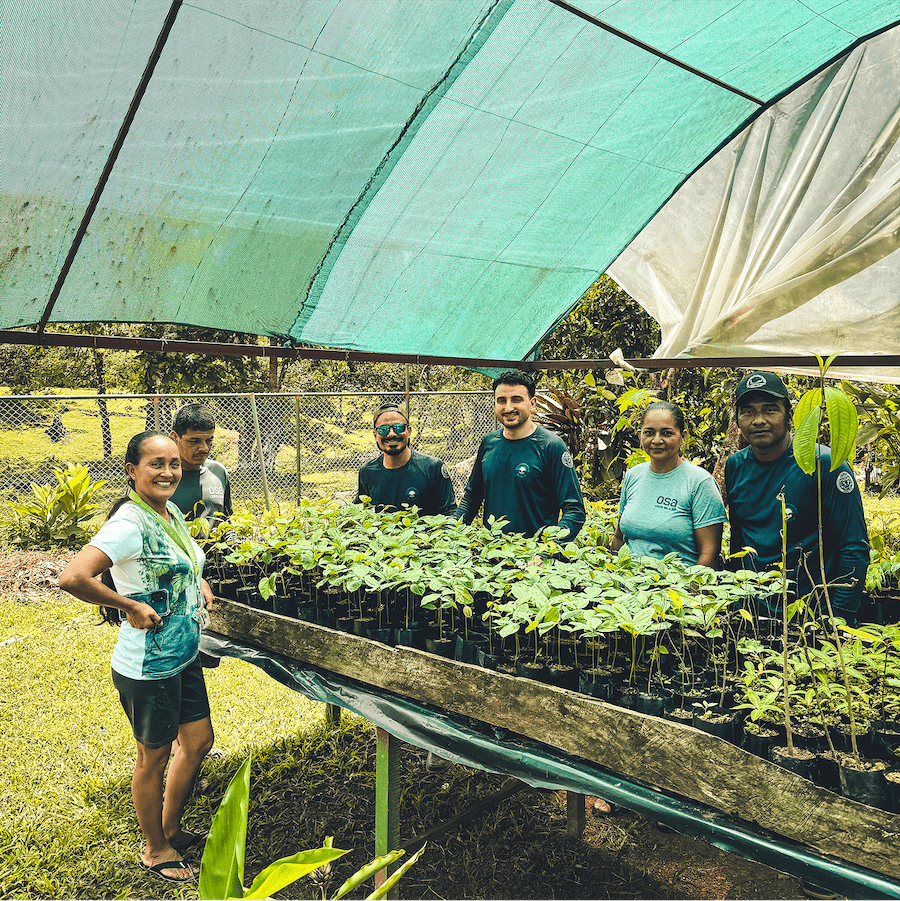

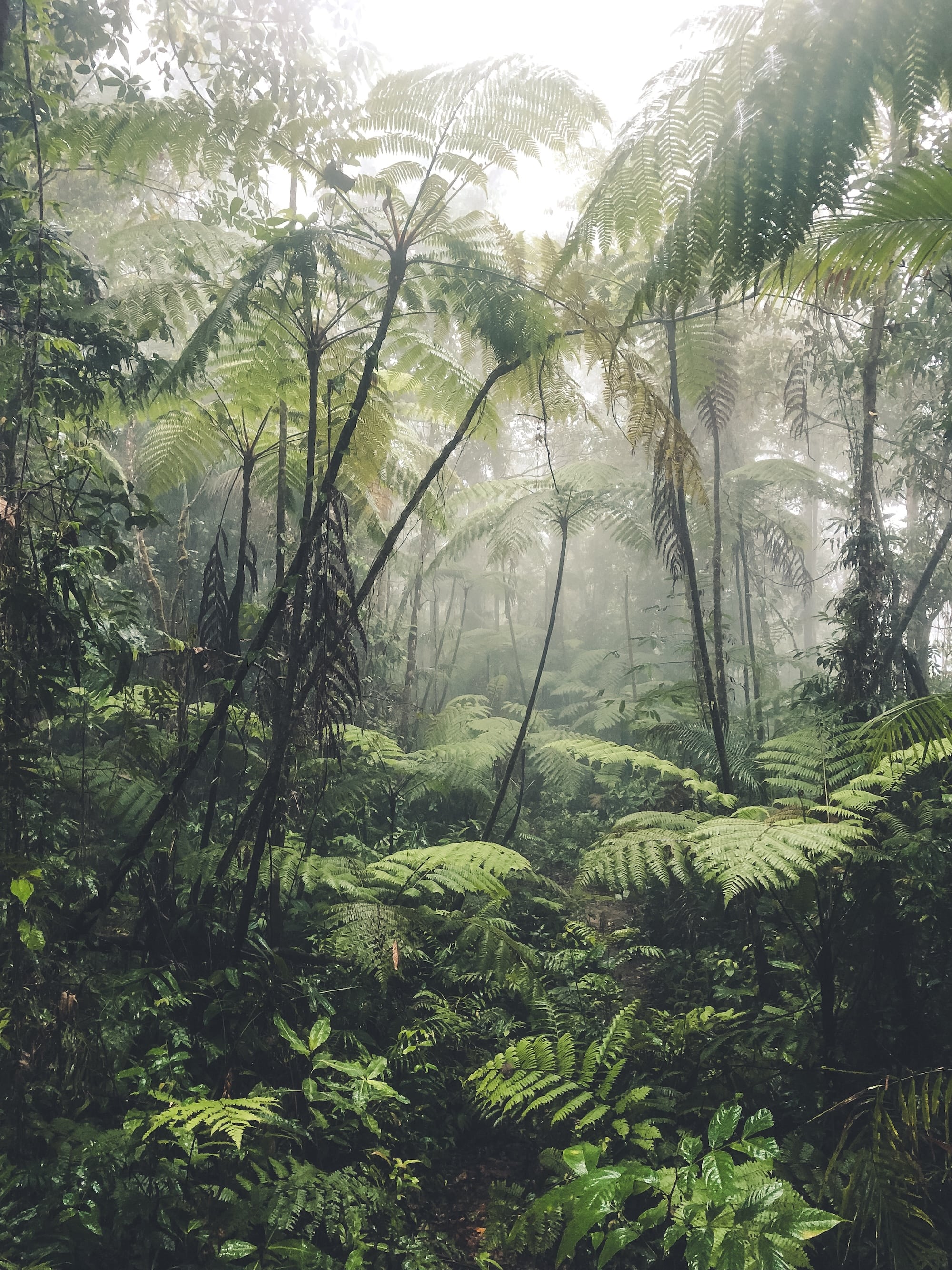
A
One-of-a-Kind
Ecosystem
Among the most remarkable habitats we protect is the rare lowland cloud forest. Unlike typical cloud forests, which are usually found at higher elevations such as those in Monteverde, this unique ecosystem exists at much lower altitudes. It is extremely rare in Costa Rica, with an estimated 3,000 hectares (approximately 7,413 acres) remaining across the country.
Within the Las Oncas Conservation Reserve, we actively preserve three distinct ecosystems: the Lower Montane Forest, the Upper Montane Rainforest, and the Tropical Cloud Forest.
Protecting
rare
lowland
cloud
Forest
Our reserve safeguards a significant portion of this disappearing habitat. Lowland cloud forests are characterized by persistent mist and moisture, creating a cool, humid environment where endemic plant species and elusive animals can live. Their scarcity makes them a top conservation priority and highlights the importance of protecting the few remaining places where they still exist.
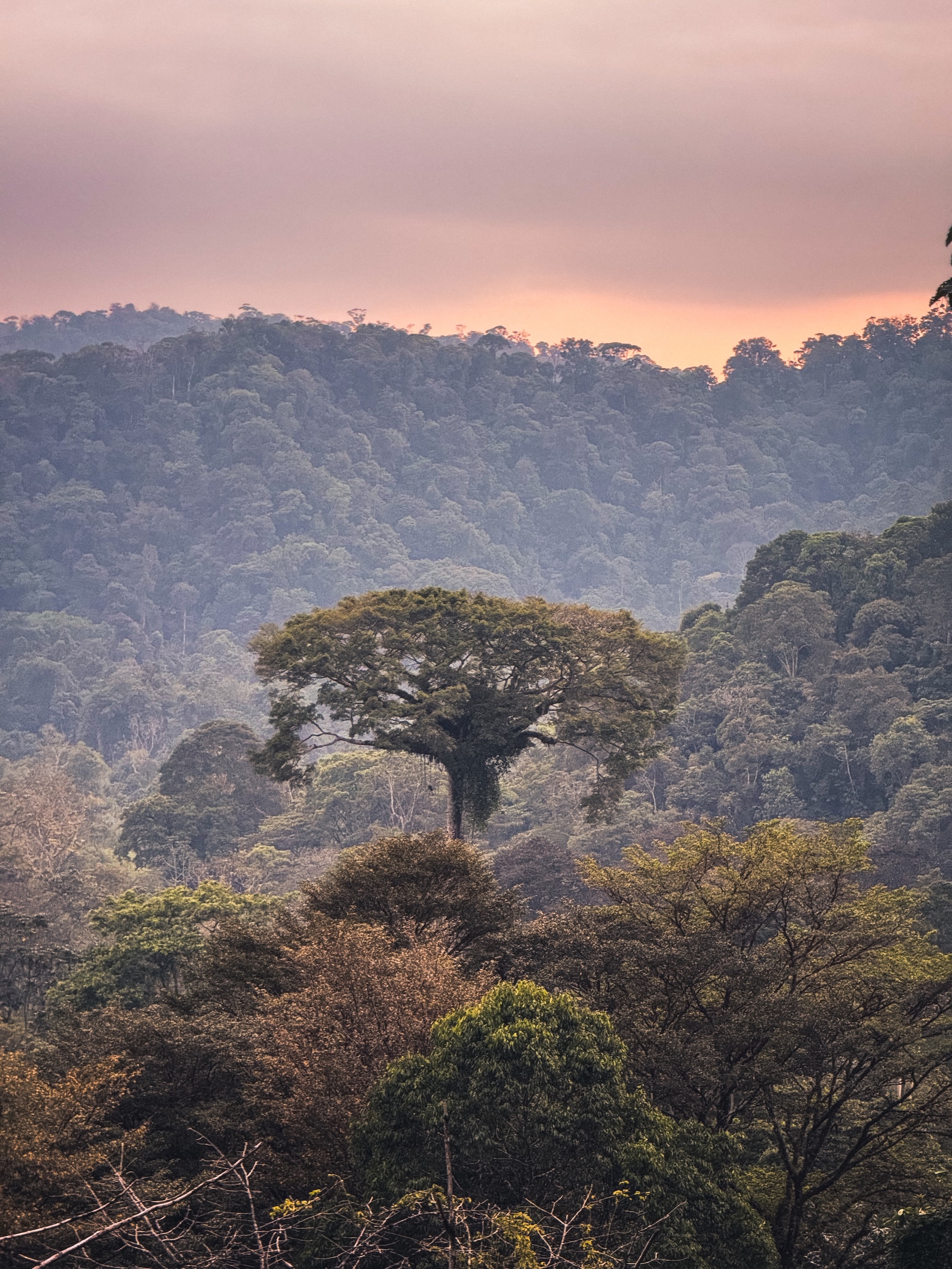
JAGUAR AVENUE
protecting Jaguar Core Territory

Las Oncas acquired this land based on over a decade of field research confirming its critical role in jaguar conservation. This area is not just another property, it is a key linkage in the jaguars’ primary route to Corcovado National Park, one of the last strongholds for the species in the Osa Peninsula. Known as “Jaguar Avenue,” the area also supports stable populations of prey species, making it an essential hunting and movement zone.
Jaguar presence in the region has been declining in recent years, posing a serious threat to the long-term survival of the species in Costa Rica's South Pacific area. Reversing this trend is central to Las Oncas’ mission. By securing and restoring a strategic jaguar corridor, the organization is advancing a broader landscape-level objective: reconnecting the Osa Peninsula with the Talamanca Mountain Range to reestablish a viable, resilient jaguar population.
CAUGHT
ON
CAMERA
Our camera trap network within the Las Oncas Conservation Reserve has captured exceptional and rare jaguar behavior, offering a unique glimpse into their lives in the wild. We have documented mating, individuals marking their territory, and even a male and female moving together, behaviors rarely seen and even more rarely recorded.
Over time, we have identified six resident jaguars within the reserve. As we carefully identify every jaguar ever detected, weare able to recognize individuals and track their presence, confirming the reserve’s importance as both a habitat and a safe space for key behaviors essential to the species' survival.
Tico Haroutiounian
Co-founder & President of Las Oncas
OUR RESIDENT JAGS

Lupo






Nubosa






Lwazo






Shāhdosa






Tico






La Quinta





LaS Oncas
RanGER
STATION
COMMING
SOON
We are planning to renovate an old house on the property, previously used by ranch staff, to serve as a temporary base camp for volunteers working in the Las Oncas Conservation Reserve.
With direct access from the road, the house will be transformed into a simple, comfortable, and functional space, well integrated into the natural surroundings. Tasks will include painting, carpentry, electrical work, and basic repairs all aimed at creating a practical and welcoming space where volunteers can rest, work, and collaborate effectively.

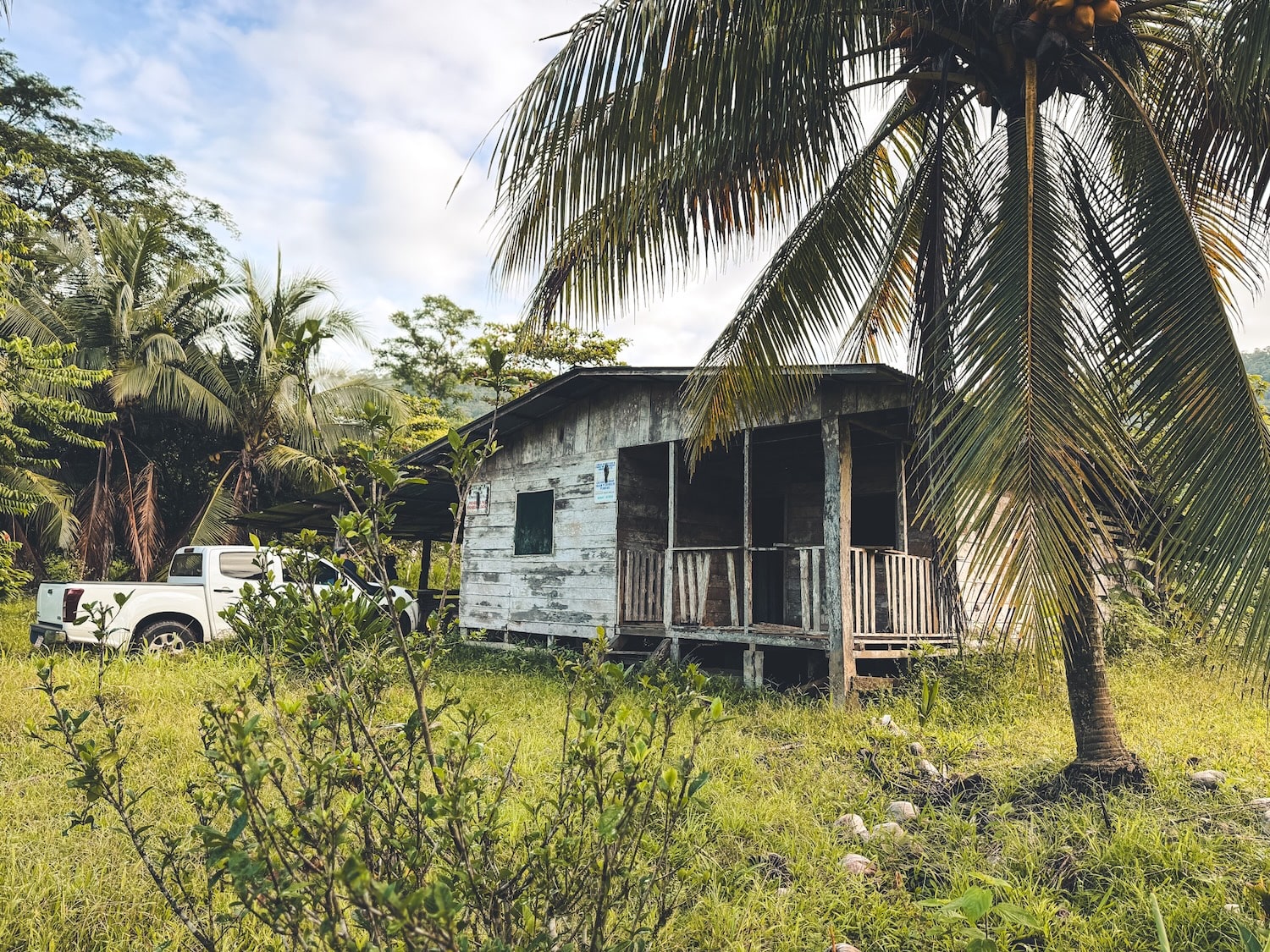
BUILD THE FUTURE WITH US
- Construction professionals
- Construction materials
- Architects
- Funds


